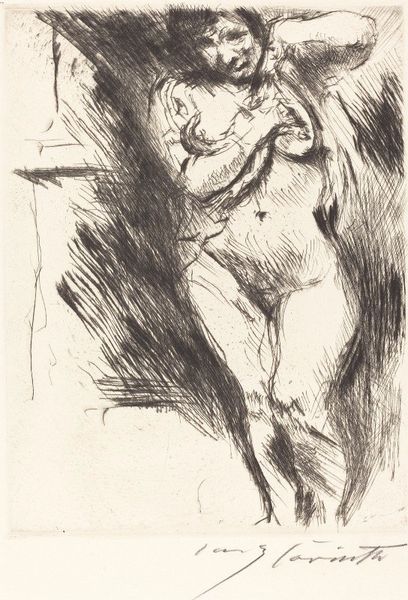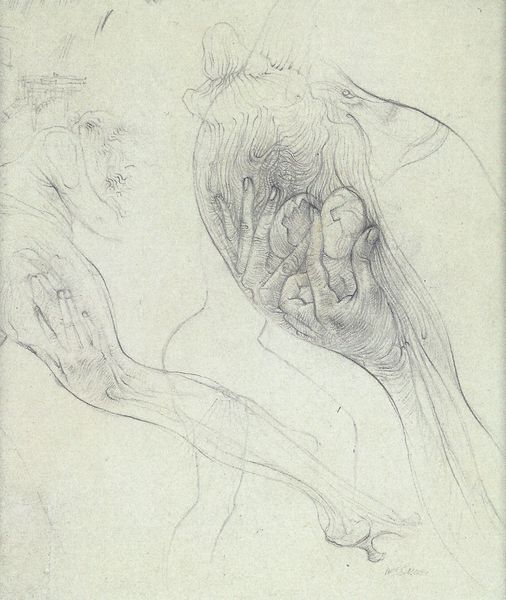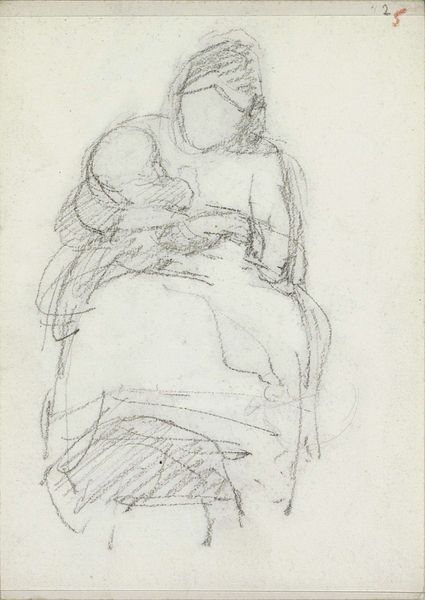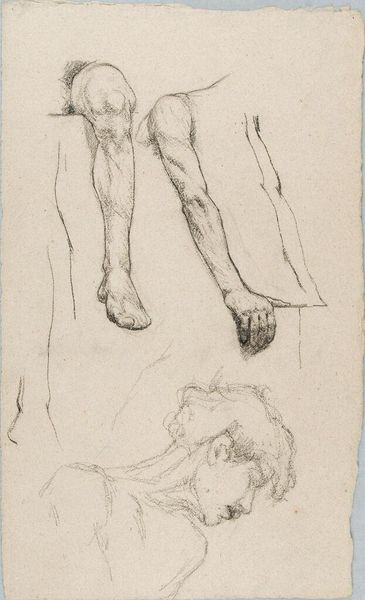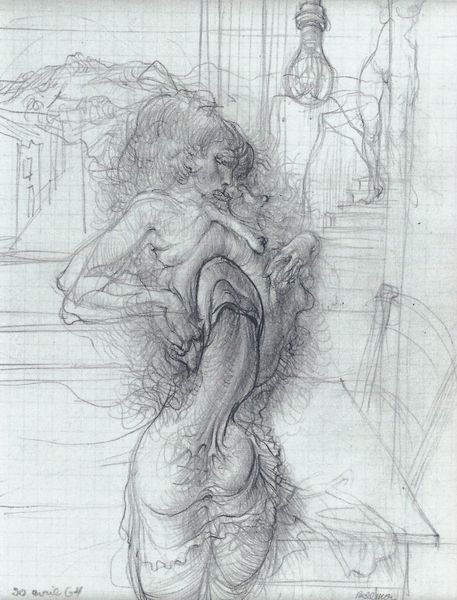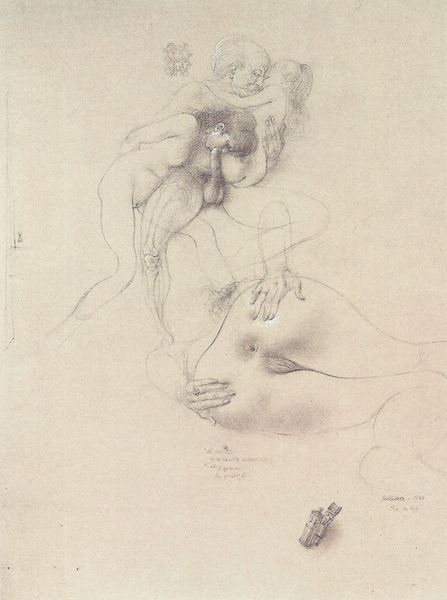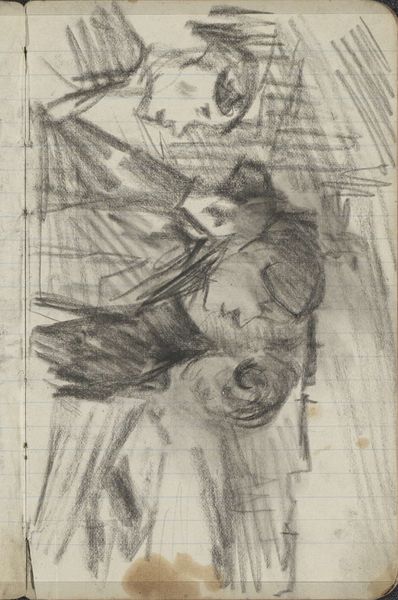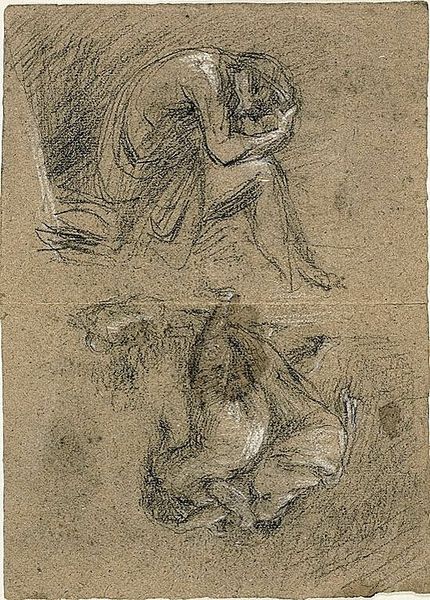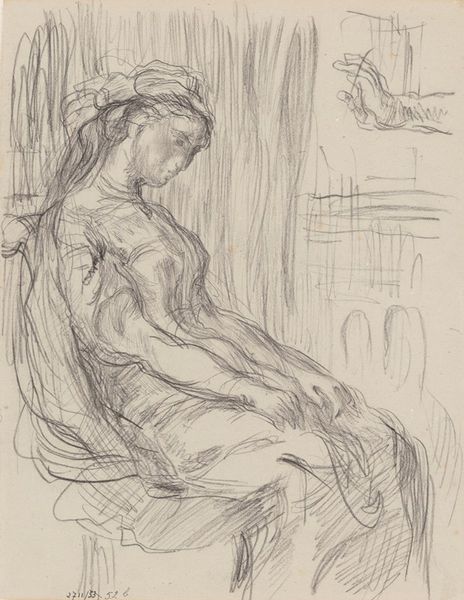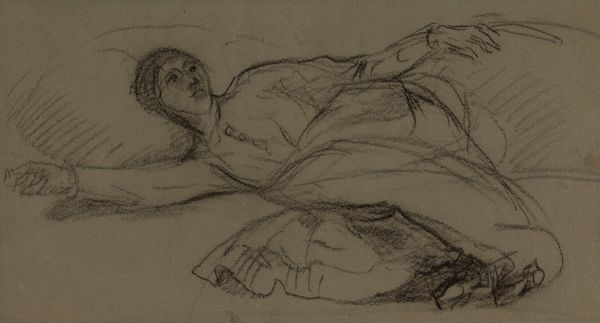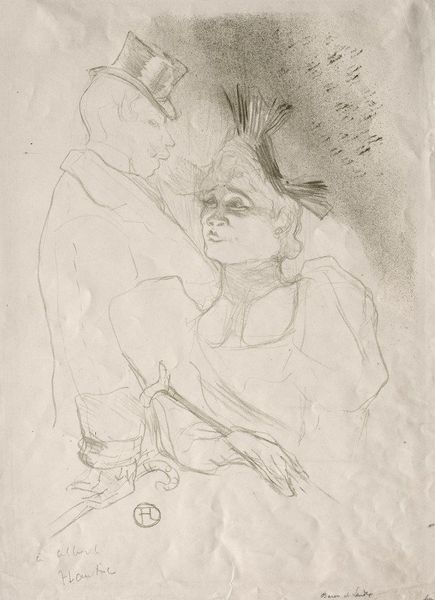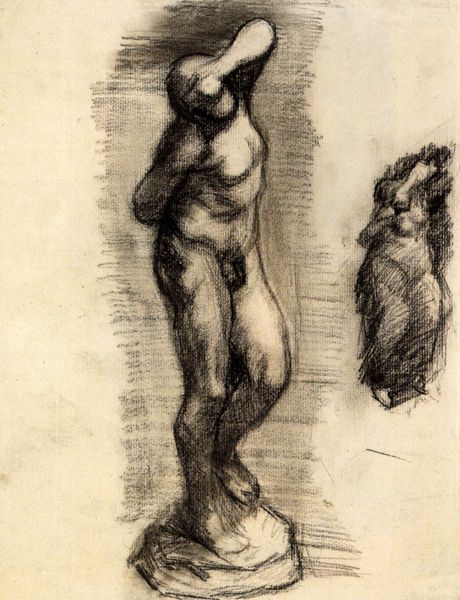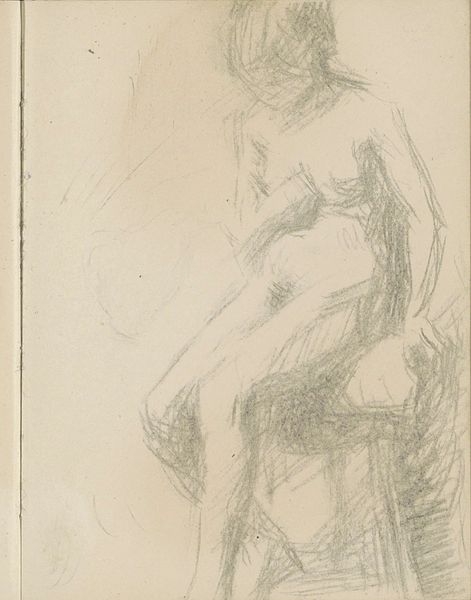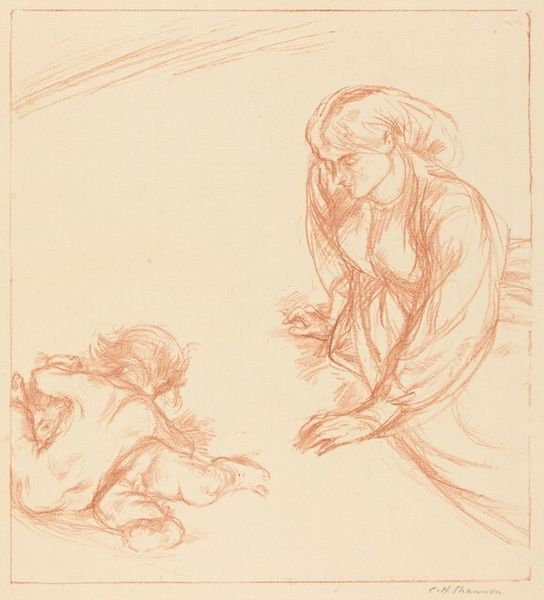
drawing, impasto, graphite
#
portrait
#
drawing
#
self-portrait
#
figuration
#
impasto
#
sketch
#
human
#
graphite
#
portrait drawing
#
arm
Copyright: Public domain
Editor: This is "Male Torso and Study for Portrait of a Woman with Flowers," a graphite drawing by Vincent van Gogh from 1887, currently residing at the Van Gogh Museum. The sketches are fragmented, and I am curious about the seemingly disparate images contained within a single frame. What formal qualities strike you when viewing this drawing? Curator: Immediately, the juxtaposition of figural studies demands our attention. Consider the interplay between the shaded density of the male torso and the comparatively linear and airy depiction of the female figure above. There is an unmistakable tension arising from this contrast in both texture and form. Editor: So, the materiality, the gradations from dark to light in the rendering of each form, defines the dichotomy for you? Curator: Precisely. The vigorous application of graphite to delineate the male torso, creating a sense of volume and weight, is intentionally different from the rapid, almost ethereal lines suggesting the female portrait. Ask yourself: how does the artist manipulate line and shadow to generate discrete spatial planes within the composition? This articulation invites us to unpack relationships across depicted objects. Editor: It does feel as if two distinct artistic impulses occupy the same picture plane. How does this impact the overall composition, and should it invite semiotic interrogation? Curator: The deliberate opposition in the formal presentation suggests a deliberate intent. Van Gogh’s attention to texture—the interplay between heavy shading and sparse outlines—creates not just a visual tension but activates critical interpretations. The fragmented narrative compels deeper contemplation as to what Van Gogh may suggest of masculine presence versus feminine ideal. Editor: This has helped me consider how seemingly disjointed images coalesce through material and formal treatment, leading to broader meaning. Curator: Indeed. By closely analyzing line, texture, and contrast, we move beyond superficial observation and approach a more nuanced understanding of the work's complexity.
Comments
No comments
Be the first to comment and join the conversation on the ultimate creative platform.
